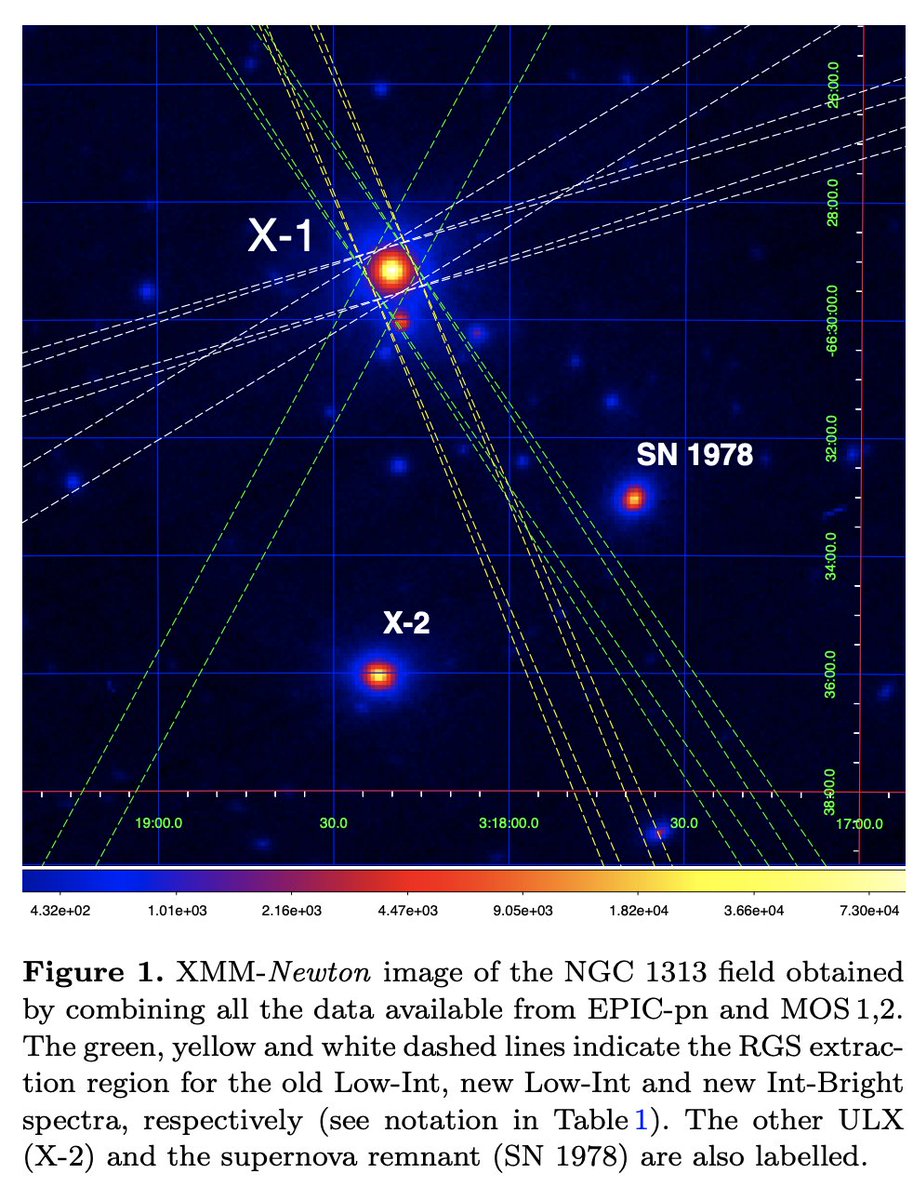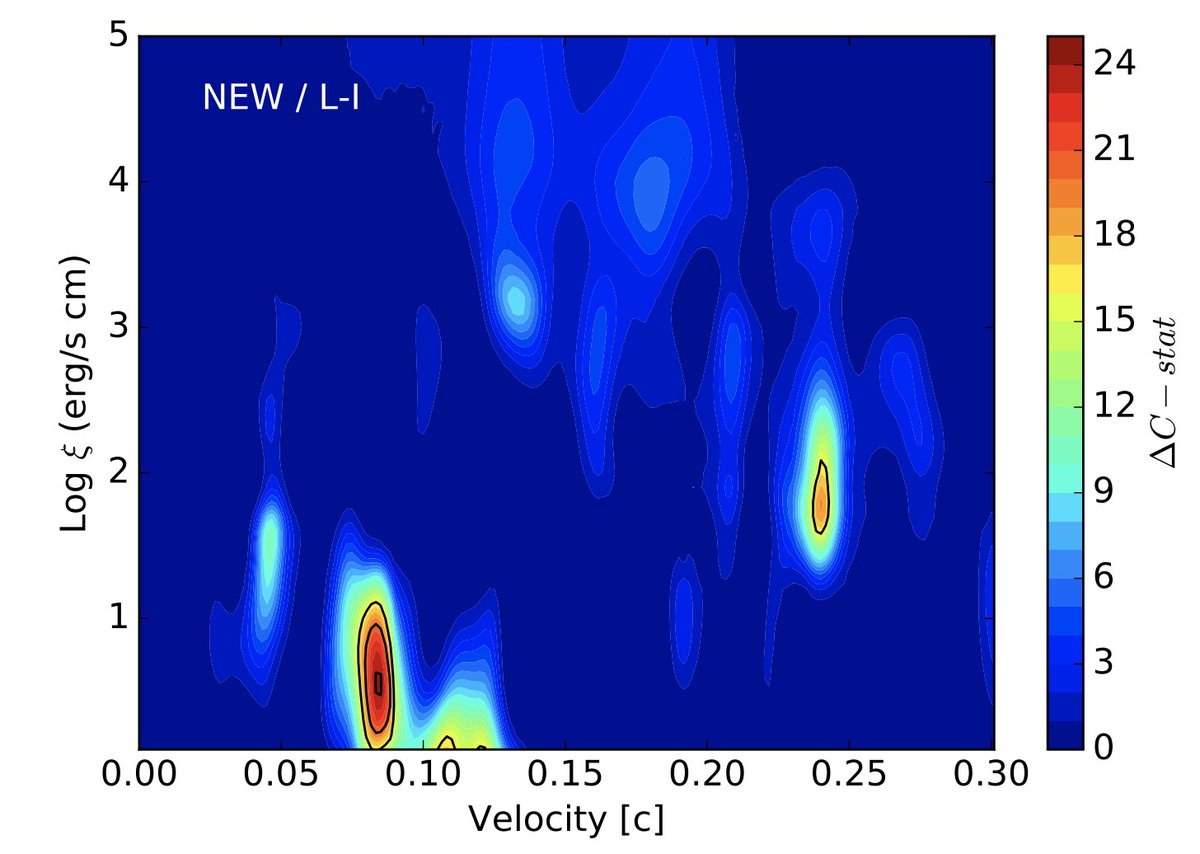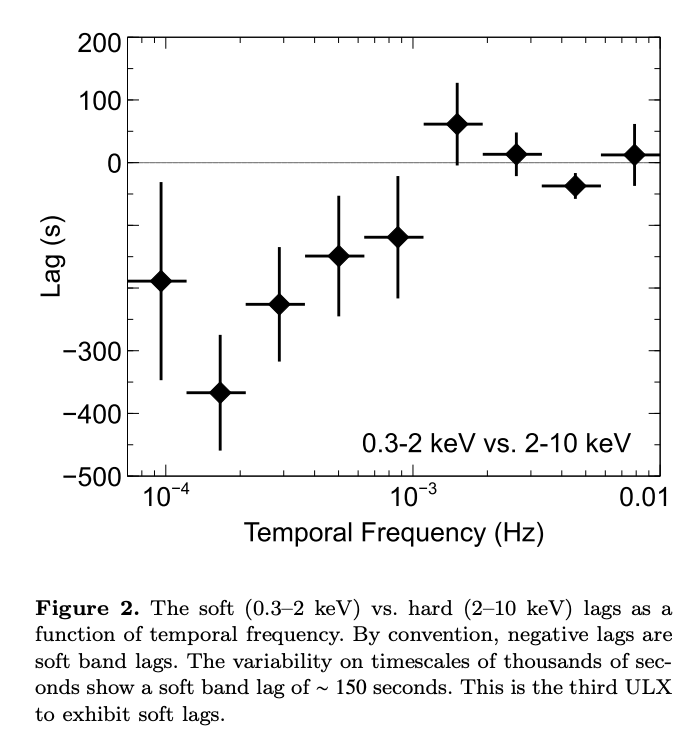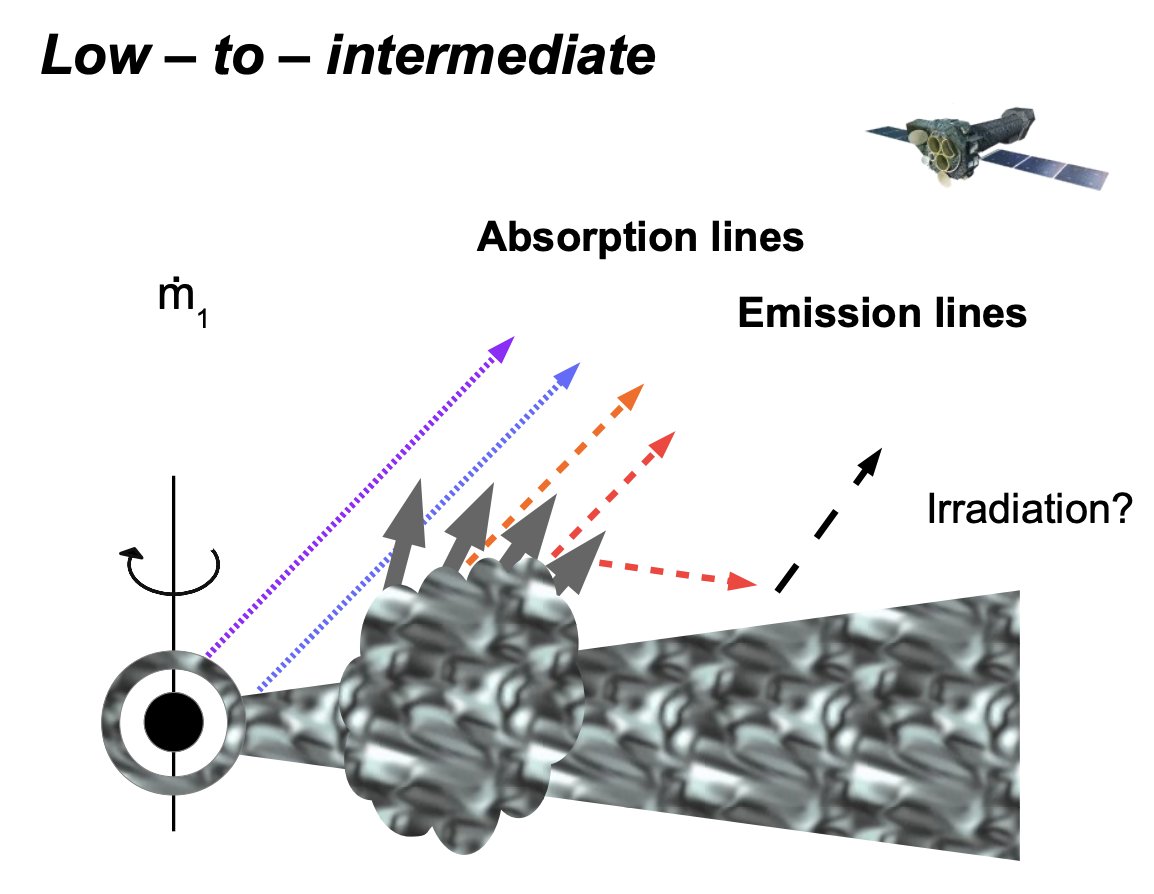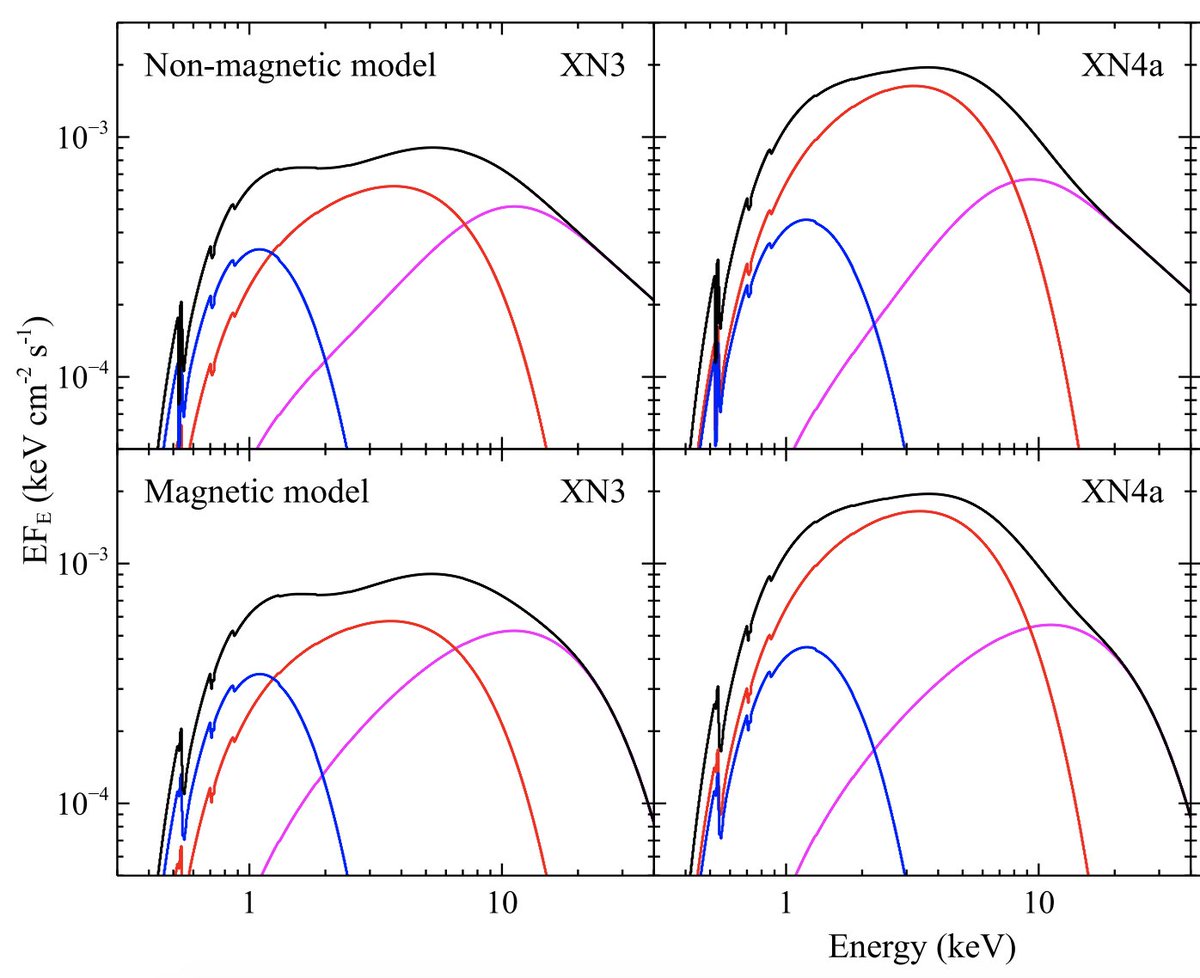Our campaign on the super accreting compact X-ray source is posted in 3 papers today. But is it a black hole or a neutron star...? @ciropinto1982 @ErinAstro @TYorkshirebloke @matteobachetti @MurrayBrightman @DidierBarret @BIGfalke @M_L_Parker
Pinto et al: https://arxiv.org/abs/1911.09568 ">https://arxiv.org/abs/1911....
Kara et al: https://arxiv.org/abs/1911.09582
Walton">https://arxiv.org/abs/1911.... et al: https://arxiv.org/abs/1911.09622 ">https://arxiv.org/abs/1911....
Kara et al: https://arxiv.org/abs/1911.09582
Walton">https://arxiv.org/abs/1911.... et al: https://arxiv.org/abs/1911.09622 ">https://arxiv.org/abs/1911....
The @ESA_XMM view of the galaxy NGC 1313. Source X-1 is ultra-luminous X-ray source (ULX) with either a BH or NS. X-2 is a ULX with a NS. The supernova remnant SN 1978 is also visible.
As well as matter falling onto these objects, it is also blown off. We detect outflows at 10 and 20% the speed of light!
Time delays between different emission components help us understand the geometry of these systems. These correspond to a size scale of 300 light seconds.

 Read on Twitter
Read on Twitter